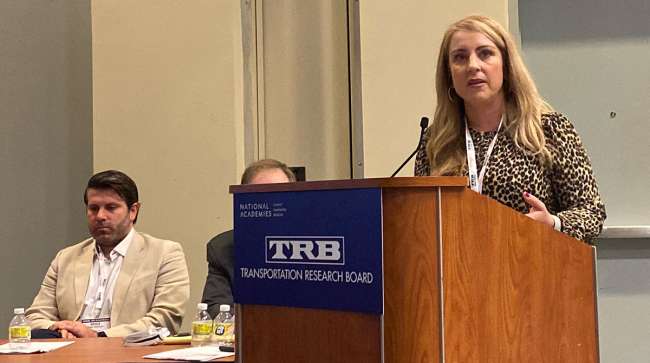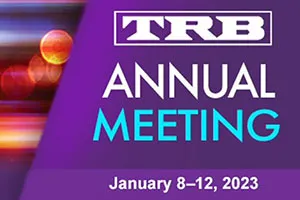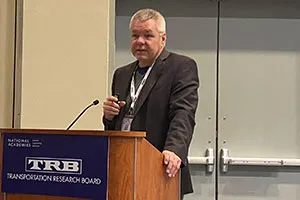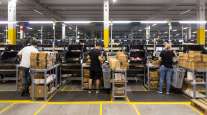Staff Reporter
Trucking Demand Growth Increases Land Management Concerns

[Stay on top of transportation news: Get TTNews in your inbox.]
WASHINGTON — The increase in demand for freight transportation is adding strain on land management, experts said during a session at the Transportation Research Board’s annual meeting Jan. 11.
“If you’ve been involved with economic development directors in a county somewhere, it’s a dog-eat-dog world,” said Nicole Katsikides, a research scientist at the Texas A&M Transportation Institute. “They’re not planning economic development projects from a systemic focus. They’re going to try to land that industrial warehouse and jobs in their county, and they don’t really care about their neighbors. They’re not really thinking about the system as a whole.”
Katsikides noted the private sector is going to be innovative to pursue things that are lucrative. She pointed out how there is competition in the private market as well as among local officials, and believes the public sector needs to find better ways to keep up with it.
“Our job is to bring that discussion together,” Katsikides said. “We need to figure out how we can try to do things systemically, but still allow for competition and the free market, things that occur.”

Katsikides also pointed out how new technologies are adding to this dynamic, including electric vehicles and automated vehicle transfer hubs. She noted these technologies often get attention, but they are an aspect of the larger issue of truck parking that isn’t celebrated as much.
“So, what does this mean for communities?” Katsikides said. “This means that the growth of warehousing, the things that we’re seeing, the changes in freight, increase demand or change freight routes and demand on facility uses. So, things are being used more, but things are changing.
“We’re seeing in a lot of communities they’re getting closer to the customer, instead of having these malls that are drying up, turning them into more customer-focused hubs to get packages back and forth because we want to go online.”
Katsikides noted the way people buy goods and their preferences are changing. She warned that communities need to develop ecosystems to support the evolution of freight technology. That means anticipating these changes, what impact they will have and planning accordingly.
We’re seeing in a lot of communities they’re getting closer to the customer, instead of having these malls that are drying up, turning them into more customer-focused hubs.
Nicole Katsikides, research scientist for Texas A&M Transportation Institute
“It really doesn’t happen like this; state DOTs need to be in lockstep with state planners, local planners and economic development agencies,” Katsikides said. “You have DOTs thinking more systemically, and then you have these other agencies or local partners that are thinking more competitively, and somehow we need to do a much better job of bringing that all together.”
The Dallas-Fort Worth area was a focus of the discussion because of its strategic and geographic importance to freight transportation. It encompasses numerous truck, rail, aviation and intermodal facilities squeezed into the same metropolitan region as millions of residents.

"We've got a lot of interesting dynamics going on in the Dallas-Forth Worth area, says Dan Lemars of the North Central Texas Council of Governments. (Connor D. Wolf/Transport Topics)
“This isn’t just longhaul trips,” said Dan Lamers, senior program manager for transportation planning at the North Central Texas Council of Governments. “This is a lot of different purposes where freight is going through the region; it’s coming into the region, it’s being broken down, repackaged, reclassified and sent out, often on a different mode. So, we’ve got a lot of interesting dynamics going on in the Dallas-Fort Worth area.”
Lamers warned there is a lot of activity that occurs in an area when 8 million people are trying to get to school and work. He noted that it has been a challenge that involves understanding what kind of warehousing is coming to the region, what type of facilities the city needs and how to properly plan for the infrastructure that goes with that. That includes truck parking and local roadway access.

What is the outlook for trucking in 2023? How will the industry change with the current government, economic and business trends? Join host Michael Freeze and TT reporters Eugene Mulero and Connor Wolf. Hear the program above and at RoadSigns.TTNews.com.
“We all know that warehousing and freight facilities, freight land uses, are going to occur,” Lamers said. “What we have to try and do is get the local governments to create protocols and processes that allow the people, the employment and the freight warehousing and facilities to interact as good neighbors.”
Prologis is a real estate investment firm focused on logistics and supply chain real estate. The company has seen a significant increase in activity in recent years, driven by traditional freight moves such as longhaul and last-mile as well as emerging uses around e-commerce, bikes and drones.

Tomlinson
“The demand on leasing is at an all-time high, comparably, over the last two or three years,” said Brock Tomlinson, Prologis’ vice president of investment for the Mid-Atlantic. “Everyone has probably felt it. But it was a white-hot market; it’s now downshifted to just a really good market. So, it’s still a very positive atmosphere right now.”
Tomlinson noted rent has increased about 20% annually for the past four years. Even so, rent makes up about 5% of total supply chain costs and that transportation and labor are the main cost drivers.
Want more news? Listen to today's daily briefing below or go here for more info:




